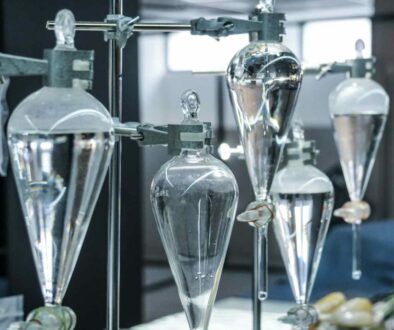Why Water-Soluble Cannabinoids are the Next Big Thing

High Purity Extractions is a leader in cannabinoid research and development. Recently we have focused our efforts into the pursuit of isolating rare cannabinoids as this is the next “big thing” for the industry. Purifying and isolating these rare cannabinoids will increase a formulators ability to accurately dose recipes targeting specific cannabinoid contents with ratioed product offerings. This will open the door to an even higher grade of natural medicine. Three market needs met by one Manufacturer:
Need #1 – Rare Cannabinoids at a more palatable price point.
Rare cannabinoids are expensive because there is a lack of manufacturers, thus it creates a supply and demand curve which is reflective in the price to the consumer. We have pursued taking these isolated cannabinoids through a nano emulsification process in order to increase these rare cannabinoids efficacy. Depending on particle size, this bioavailability is increased by 2-8 times. If you are sourcing from a quality manufacturer such as HPE, consuming 10mg of nano cannabinoids, in theory, would be equivalent to consuming up to 80mg of isolate. This allows us to offer a quality product that will meet the desired effect at a much more palatable price point.
Need # 2 – A more effective delivery system for these rare cannabinoids.
Polymeric nanoparticles such as maltodextrin have been extensively studied as particulate carriers in the pharmaceutical and medical fields because they show promise as drug delivery systems as a result of their controlled- and sustained-release properties, subcellular size, and biocompatibility with tissue and cells [Couvreur, 1995]. Nanoparticles improve the bioavailability of lipophilic compounds, such as Cannabigerol, and present special interest in oral delivery [Duran, 2015]. Nanoparticle compositions of cannabinoids create standardized precision and metered dosage forms of cannabinoids. Nanoencapsulation increases cannabinoid transport across hydrophobic mucosa and increases the bioavailability of the cannabinoid two to eight-fold. Conversely, you can decrease the dose of nano encapsulated cannabinoids two to eight-fold less than the amount of cannabinoids needed to elicit the same therapeutic effect compared to raw and non-encapsulated cannabinoids. Nanoencapsulation technology enables safe more efficacious cannabinoid therapy [Esposito, 2016].
Need # 3 – A consistent source of these products in both quality and quantity.
We manufacture these blends in an FDA approved facility and operate under cGMP guidelines. Through our nano-emulsification and encapsulation process we can offer a wide range of products. Our standard product offerings are of cannabinoid concentrations of 10% and 20%. We can also provide custom concentrations if desired anywhere from 1-20%. We manufacture at scale and will have no issues meeting any customers demands for volume.
We back up everything with the most extensive testing which includes particle size testing and zeta-potential testing.
Why Particle Size Matters
Our particle size tolerances never exceed 70-100 nanometers in all of our products. Molecules such as CBG converted to nano-sized particles boast a higher surface area to mass ratio which results in a higher absorption rate in the body. Ultimately, your body will require less to get the same desired effect because nano CBG is more “bioavailable”.
Why Zeta-Potential Testing is important
Zeta Potential testing calculates a material’s likelihood of crashing out in a liquid. The further the material tests away from “0” the less likely that material is to crash out of the liquid. Our nano products test on average between -40 to -50 mV which is a great result and indicative of longer shelf life.
As a service, we also custom formulate this material with other constituent ingredients and supply a bulk material that can go right into final fill and package of consumer goods, i.e. ready-to-drink, shelf-stable beverages, bottled or boxed water, and high-end cosmetics such as serums, salves, and moisturizers.
References:
Couvreur, P., Dubernet, C., & Puisieux, F. (1995). Controlled drug delivery with nanoparticles: current possibilities and future trends. European journal of pharmaceutics and biopharmaceutics, 41(1), 2-13.
Durán-Lobato, M., Martín-Banderas, L., Gonçalves, L. M., Fernández-Arévalo, M., & Almeida, A. J. (2015). Comparative study of chitosan-and PEG-coated lipid and PLGA nanoparticles as oral delivery systems for cannabinoids. Journal of Nanoparticle Research, 17(2), 61.
Esposito, E., Drechsler, M., Cortesi, R., & Nastruzzi, C. (2016). Encapsulation of cannabinoid drugs in nanostructured lipid carriers. European Journal of Pharmaceutics and Biopharmaceutics, 102, 87-91..

